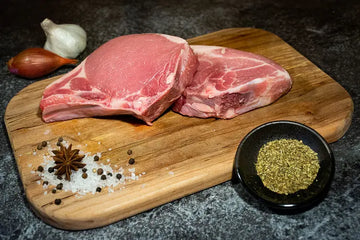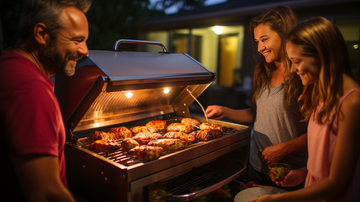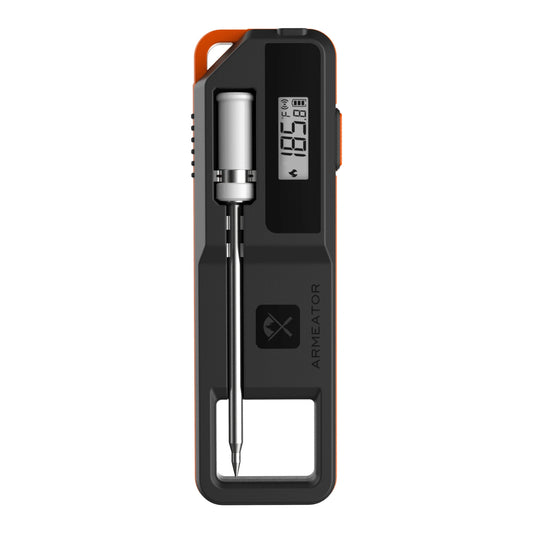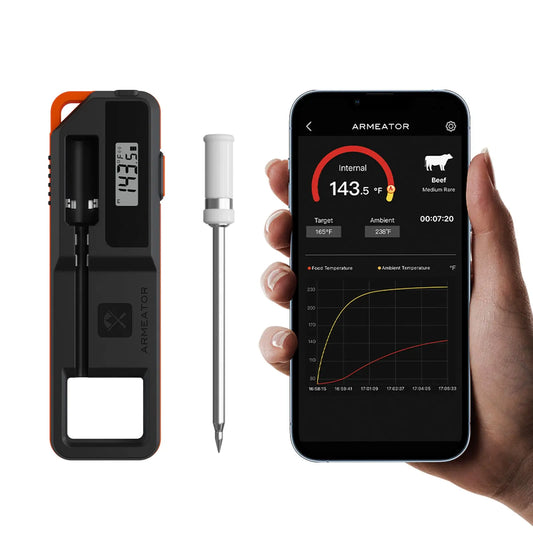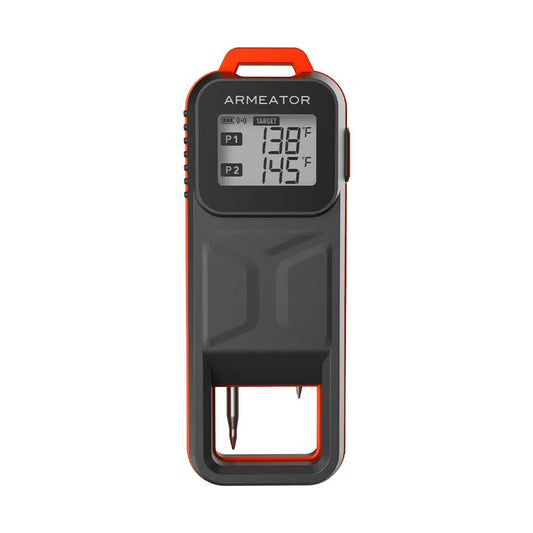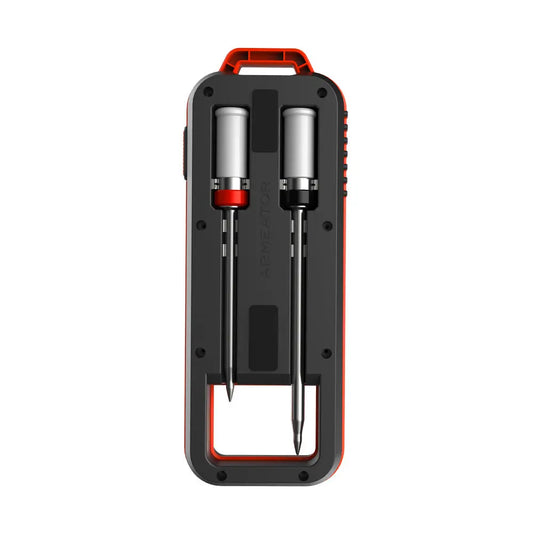A delightful dinner, with a perfect pork chop as the main course. To achieve the pinnacle of juiciness and tenderness, it's not just about fancy techniques; it's all about precision. Our secret weapon is the Armeator One wireless meat thermometer, designed to handle high-temperature cooking, ensuring your pork chops are always cooked to perfection.
The Nutritional Value of Pork Chops
High-Quality Protein and Amino Acids: Pork chops are an excellent source of protein, crucial for the body's maintenance and repair. It aids in building and repairing muscles, tissues, and cells. Moreover, the protein in pork chops contains all essential amino acids, the foundation of a healthy body.
Vitamin B: Pork chops are rich in various B vitamins such as Vitamin B6, Vitamin B12, Riboflavin (B2), and Niacin (B3). These vitamins play a critical role in energy metabolism, nervous system function, and red blood cell production.
Mineral: Pork chops are abundant in minerals, particularly phosphorus, zinc, and selenium. These minerals are essential for bone health, immune system support, and antioxidant functions.
High-Quality Fat: Pork chops contain a certain amount of fat, but most of it is monounsaturated fatty acids, which contribute to maintaining heart health.
Despite being rich in nutrients, it's essential to consume pork chops in moderation. Overindulgence can lead to unhealthy weight gain and other health issues. Choosing the right cooking method is also vital, and the healthiest choice is to grill, roast, or cook pork chops rather than deep-frying them.

How to Select Pork Chops
Pork chops come from the loin, extending from the hip to the shoulder. They are tender, lean cuts of meat known for their excellent flavor and tenderness. Given their quick cooking time and versatility, it's no wonder they're a go-to choice for weekend dinners.
Prioritize Pasture-Raised Pork: This feature should be clearly labeled on potential pork chop packages. However, if it's not, simply ask your butcher which pork chops are pasture-raised.
Opt for Thicker Cuts to Prevent Dryness: Thicker pork chops retain moisture better. You might want to ask for double-cut chops or specify that you want them to be at least 1½ inches (3.8 cm) thick.
Choose Pork Chops with Minimal Marbling: "Marbling" refers to the white veins of fat within the meat. Ideally, pork chops should have minimal marbling and no yellow fat.
Select Fresh Pork Chops: Look for pork chops that appear vibrant, without dark spots or discoloration. Fresh pork chops should have a naturally bright pink hue.

How to Cook
Dry Rub for Pork: Prepare a mixture of brown sugar, chili powder, cumin, thyme, and salt. Mix them thoroughly. Rub the seasoning mixture firmly onto the surface of the pork with your hands, ensuring even coverage on all sides. Allow the meat to rest for at least 15 minutes, allowing the seasoning to penetrate the meat.
Insert the Thermometer: Insert a wireless meat thermometer into the pork chops, ensuring it's placed in the thickest part of the meat, avoiding contact with bones. Here, we recommend using the Armeator One wireless meat thermometer, designed for high-temperature grilling and capable of withstanding ambient temperatures of up to 932°F (500°C). This thermometer is well-suited for most grilling methods, and you can use it confidently without worrying about it getting damaged in high-heat environments.
Simply insert the thermometer into the pork chops and set your desired target temperature through the connected smartphone application. We recommend setting the internal temperature of the pork chops to 145°F (63°C). Remember, the meat's temperature will continue to rise slightly after cooking.
Begin Cooking: Heat a cast-iron skillet or large oven-safe pan over medium-high heat until hot. Add olive oil, swirling to coat the pan. Sear the chops for 2-3 minutes on each side until they turn golden brown. Place a small piece of butter on each pork chop. Then, transfer the pan with the pork chops into the preheated oven. Once the target temperature is reached, move the pork chops to a plate and loosely cover with aluminum foil. Let them rest for 10 minutes.
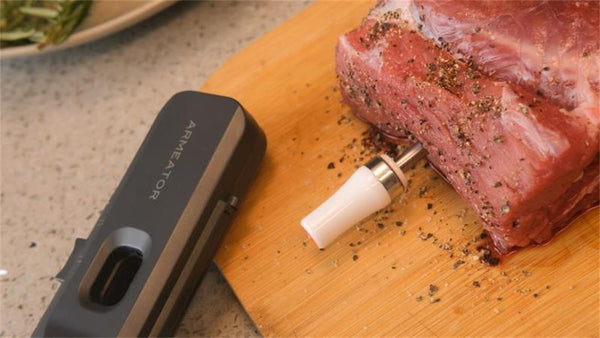

SHOP NOW >>
Ensuring the Pork Chops Reach the Right Temperature
The FSIS recommends a minimum internal temperature of 145°F (63°C) when cooking pork chops, as well as other meats like beef, lamb, veal steaks, roasts, and fish. Consuming undercooked meat can lead to various health issues, so it's essential to pay special attention to food safety when cooking meat. Using a meat thermometer is the simplest and quickest way to ensure that meat reaches the proper internal temperature.
Feel free to make any further adjustments or let me know if you have any additional requests!

